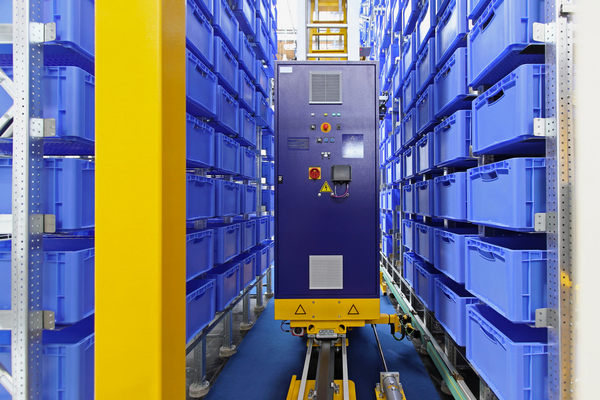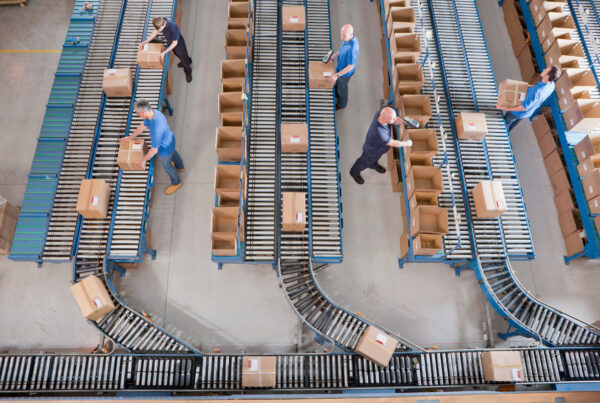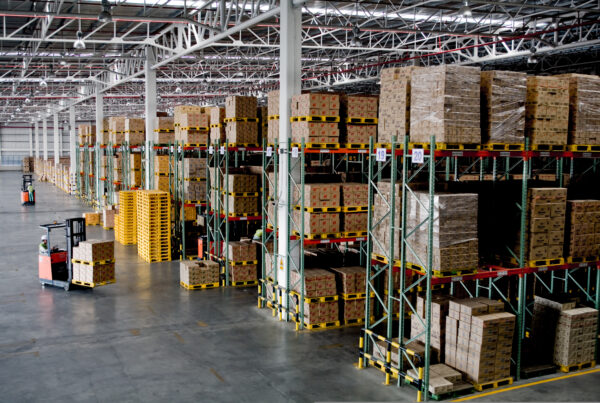Warehouse optimization is the process of using space and resources within a warehouse more efficiently through techniques such as automation. Warehouse optimization streamlines operations within the facility, making them more efficient and result-oriented.
Warehouse optimization implemented using meticulous planning and experienced professionals maximize process results and heightens customer experience. SRSI is highly experienced with designing optimal warehouse solutions of all scales and can help you craft the best system for you in your space.
How to Optimize a Warehouse?
Optimizing your warehouse involves examining every aspect of your facility, from space to inventory placement and tracking, packaging, transportation, and shipping. With so many components involved, it can be difficult to prioritize and find the right way to optimize.
If you are planning to optimize your warehouse, here are five key areas to focus on, for maximum benefits:
Use Reliable Warehouse Software Solutions
Warehouse Management Software enables businesses to automate their day-to-day warehouse operations. An automated warehouse system guides facility managers toward more efficient inventory management, storage, and order fulfillment.

Warehouse software solutions also support daily task planning, staff management, material movement, control and inspection, and documentation. With a customized software solution, logistics executives can monitor and manage warehouse operations from a single location.
As software solutions help keep track of every aspect of warehouse management, issues such as material losses and emergency deliveries are minimized.
Other benefits of warehouse management software (WMS):
- Maximizes resource utilization
- Reduces inventory wastage
- Improves warehouse management expenditure
- Facilitates efficient procurement planning
- Keeps track of entire warehouse financial flow, from inventory procurement costs to transportation billing and delivery invoice.
- Makes access to warehouse insights for sound decision-making easier
Introduce Automated Material Handling System
Automated Material Handling (AMH) refers to the use of automated equipment for material movement and control within warehouses. With AMH, materials can be moved, protected, retrieved and stored, more efficiently across various processes, from storage to distribution, consumption, and disposal.
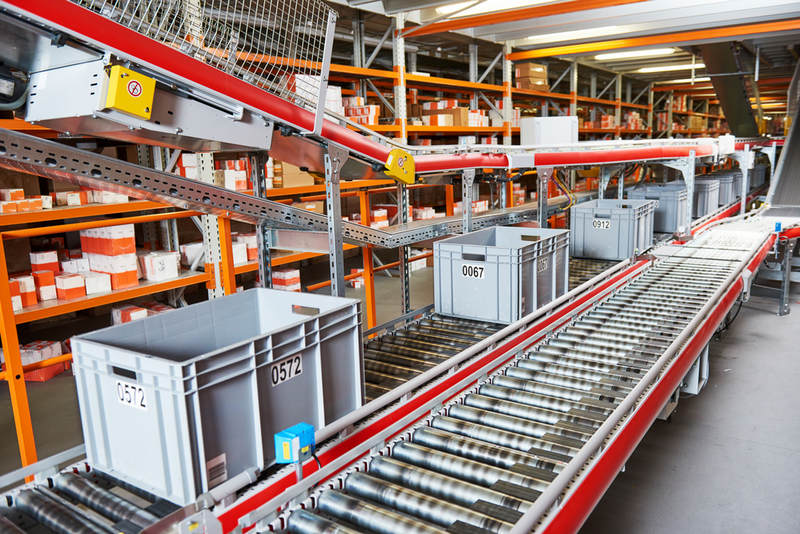
If you are wondering how to optimize warehouse space, then AMH is your solution. Automatic machines reduce human intervention, which minimizes foot traffic within a warehouse.
Use of right automated storage machines enables you to leverage unused warehouse space such as vertical spaces, which leads to better storage management and space optimization.
AMH benefits warehouses in multiple other ways, including:
- As material-handling is automated, accidents and injuries due to manual material handling are reduced, leading to a safer workplace
- Process efficiency is improved as automation delivers faster results. It also reduces human errors, leading to an increase in the accuracy of results
- Automated material-handling integrates multiple warehouse processes, which leads to a well-connected operation. Whether it is material tracking or relevant data capture, automated equipment provides real-time insights for well-informed decision-making.
As a result, deliveries are all fulfilled without delays. - Better resource management is achieved as labor can be assigned to high-value tasks
- Allows for better data-based predictions for key warehouse processes, including inventory replenishment and order fulfillment
- Enhances customer experiences
Invest in Automated Storage and Retrieval (AS/ RS)
Even if you are not interested in fully automating your warehouse, you could consider investing in AS/ RS to reap immediate as well as long-term benefits. AS/ RS systems are computer-controlled equipment designed to pick and put materials at pre-designated storage points with speed and accuracy.
AS/ RS can increase material-handling accuracy by up to 99.99% and more. AS/ RS systems can save a maximum of 85%+ of floor storage space. These automated systems can increase labor productivity by up to 85%. (Source: MHI website)
Some examples of AS/ RS systems include:
- Unit Load Systems – These are large load storage AS/ RS systems. They usually consist of pallets arranged in a rack structure for storage and handling.
This automated warehouse racking system can handle over 1000 pounds of weight and can reach a height of 100 feet or more. - Shuttles – These are automated machines for handling cartons, trays, and totes, each individually or together in the same system. They are popular for warehouse storage and retrieval.
See our RAFT solution: www.SeeTheRAFT.com - Vertical Lift Modules or VLMs – AS/ RS equipment consist of tray-like units arranged on the front and back of the system, for storage. There is an automatic material feeder/ extractor unit for material storage and retrieval to and from the trays.
Incorporate Automatic Guided Vehicles (AGVs)
AGVs are computer-controlled load carrier machines. They are optimal solutions for transportation warehouse optimization within the facility. They use built-in software and sensors to carry loads and identify obstacles along a preset path. AGVs may or may not have a manual operator onboard.

With a reliable AGV in place, your warehouse can:
- Reduce product loss during transition
- Minimize material-handling damage
- Realize better space optimization as these machines occupy lesser space than standard forklifts and conveyors
- Achieve efficient line balancing in product operations that involve multiple processes at different times
- Reduce warehouse operation costs
- Get better accessibility to hard-to-reach spaces such as narrow aisles
- Achieve better and faster business scalability as AGVs can be programmed to adapt to changing warehousing requirements
- Maintain uniform system costs unlike labor costs, which can increase based on the local economy
Maintain a Warehouse Equipment List
Maintaining a warehouse equipment checklist enables facility managers to leverage strengths and identify pain points. A checklist ensures that managers have all the equipment key to a successful warehousing operation.
With a well-maintained warehouse equipment list, executives can:
- Improve warehouse safety
- Adhere to warehousing regulations
- Improve process efficiency
- Implement the best equipment that increases warehousing efficiency
- Standardize processes for consistent high-quality results
In Conclusion
Warehouse optimization is important to increase operational visibility, enhance material handling, leverage unused space, and make order fulfillment more accurate.
Timely order fulfillment leads to better customer experiences and paves way for stronger customer relationships in the long run.
In the long term, optimization enables executives to identify bottlenecks that can slow down logistics before they impact business growth. With a disciplined approach to warehouse optimization and integration, implementation, and support from the SRSI team, your business can scale faster than expected. Contact one of our Solutions Specialists to kickstart your company’s growth today.
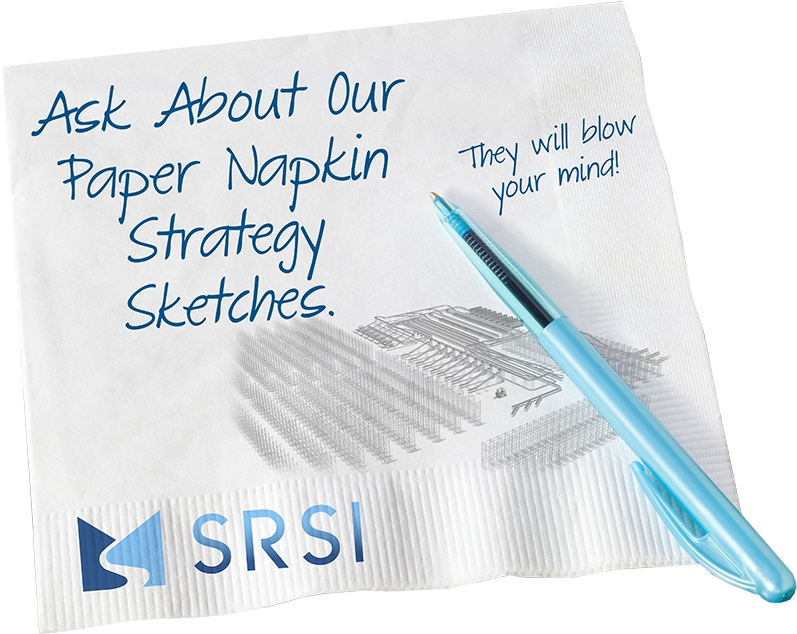 Skip to main content
Skip to main content

